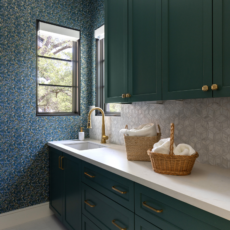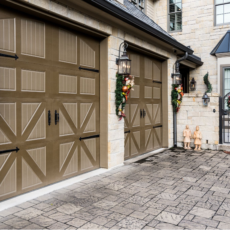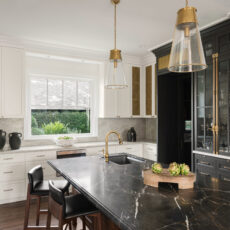Our Houston Interior Designers Share Tips to Maximize Your Living Space with a Seamless Indoor-Outdoor Design Plan
Summer days are upon us. (At our Houston interior design firm, it actually feels like they’ve been here for a while!) But as the temperatures warm up across the rest of the country and the evenings glow longer, it’s time to ask yourself: “Are you fully utilizing your outdoor space?” Learning how to create an indoor-outdoor flow in your home is the best way to maximize your square footage and fully enjoy the summer season.
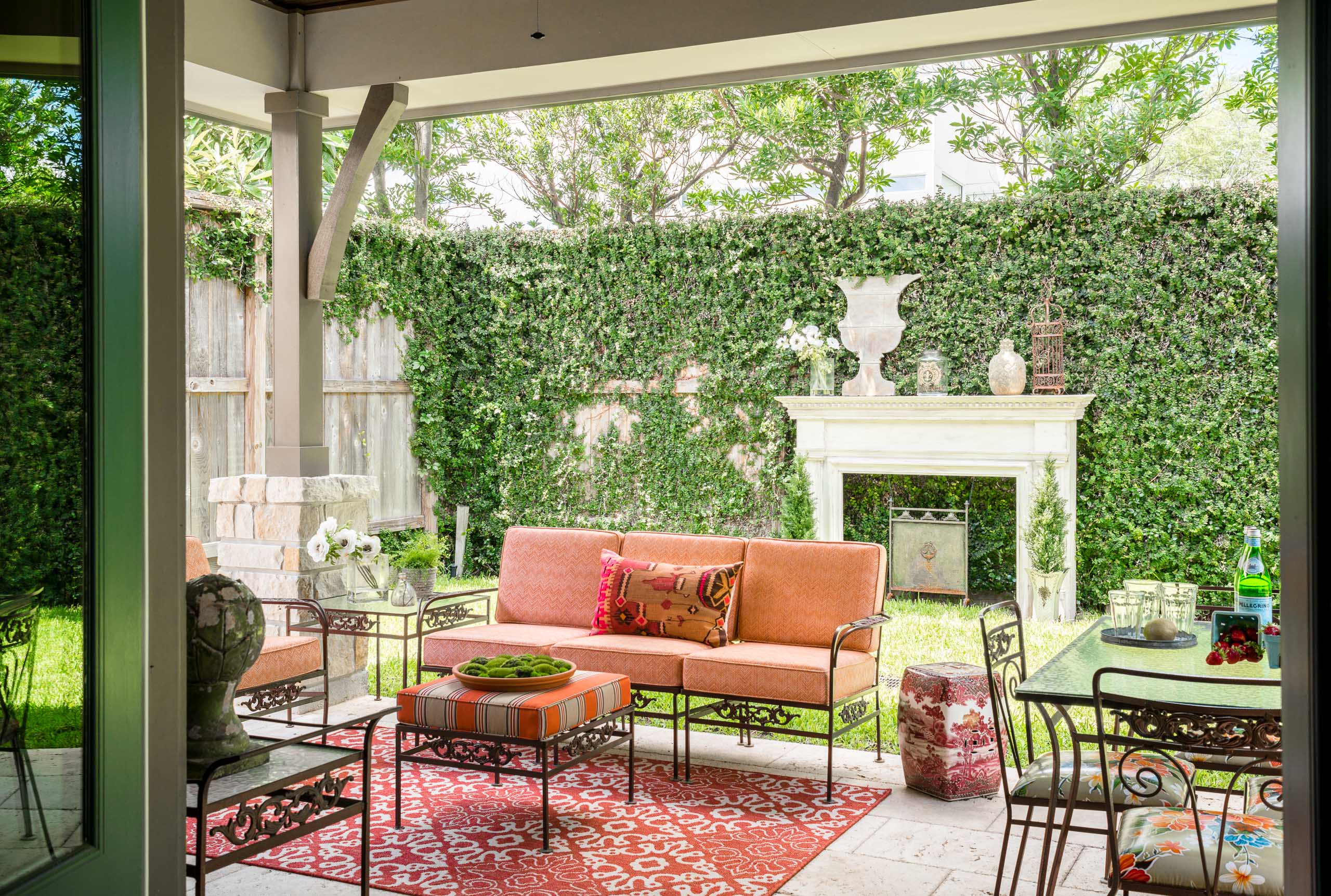
Designing for indoor-outdoor flow should not only accommodate our functional needs but also sweeten our at-home lifestyles. What’s better than hosting dinner al fresco on the patio or relaxing poolside with a glass of wine?
Our Houston interior design team has been busy preparing client homes for the summer. We’re sharing some of the principles, benefits, and practical considerations we use to design for indoor-outdoor living. Let’s dive in!
Summer Living at Its Best
Creating good indoor-outdoor flow is more than installing a large sliding glass door to connect your interior and exterior spaces. It’s about creating a sense of continuity between the two worlds. A good indoor-outdoor design plan combines the two spaces to maximize the use of natural light, usable square footage, and functionality while allowing everyone to move seamlessly between inside and outside. While contemporary homes seem to prioritize indoor outdoor living the most with their walls of glass and expansive patios, this design principle isn’t limited to any particular style. It can be applied across various contexts, from residential homes to commercial buildings.
Key Design Principles for Creating Indoor-Outdoor Flow
Here are the top design principles to consider when planning for indoor-outdoor flow.
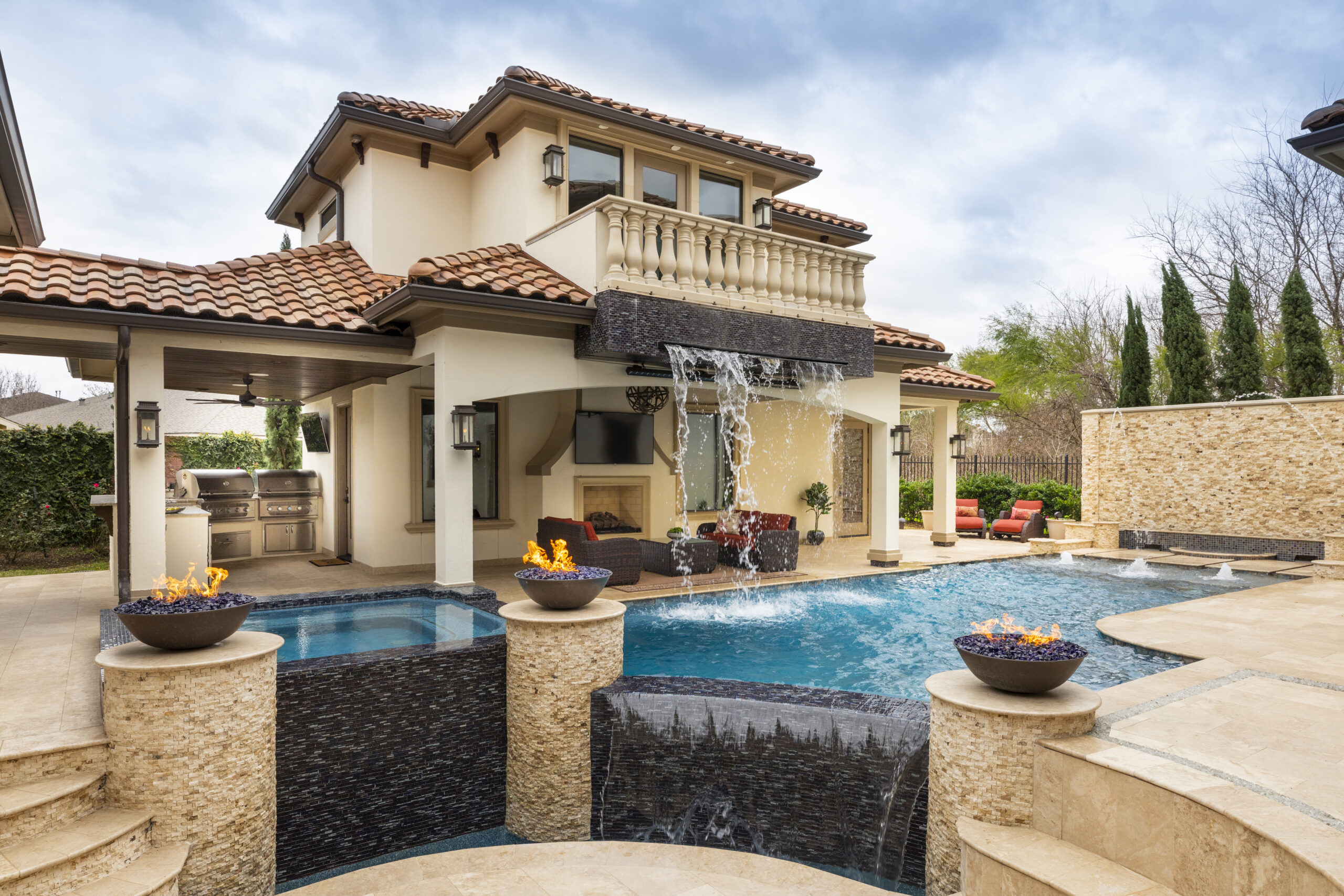
Spatial Continuity
Try to create a sense of openness and connection when designing the layout. This can be achieved by strategically placing doors, windows, and openings that visually connect interior rooms with outdoor areas.
Versatile Materials
Consistency in materials and finishes can help blur the boundaries between indoor and outdoor spaces. Using durable and versatile materials such as stone, wood, or concrete and extending those materials indoors to outdoors can help the whole space feel more continuous and intentionally designed. Many tile flooring options can be applied indoors and out, so you don’t have to compromise on style.
In fact, in this luxurious Mediterranean outdoor living area we used the same tile inside and out. The builder ordered it in different finishes so that it was appropriate for the different areas yet blurred the lines from inside the home to the outdoors.
We also specified a wonderful indoor/outdoor tile for a condominium driveway, porte-cochère and entry. It came in a light and a medium hue so we brightened the lobby with the creamy tile and used the earlier color outside to blend in with the landscaping. We also had the opportunity to suggest highly slip-resistant tile outside and around the pool for safety.
Integration of Nature
Integrating natural elements into the overall design further enhances the indoor-outdoor experience. Incorporating greenery, gardens, and water features can emphasize the surrounding landscape while creating a visually appealing look and a relaxing space.
Flexibility and Adaptability
Depending on where you live, designing for indoor-outdoor flow requires flexibility to accommodate different climates and seasons. Think about your guests, too. There’s always one guest who is more sensitive to the summer heat than others. Features such as retractable glass walls, sliding doors, and adjustable shading systems allow occupants to control the degree of openness and privacy according to their needs. Here in Houston, we recommend our clients install porch fans and even retractable screens to keep the bugs away.
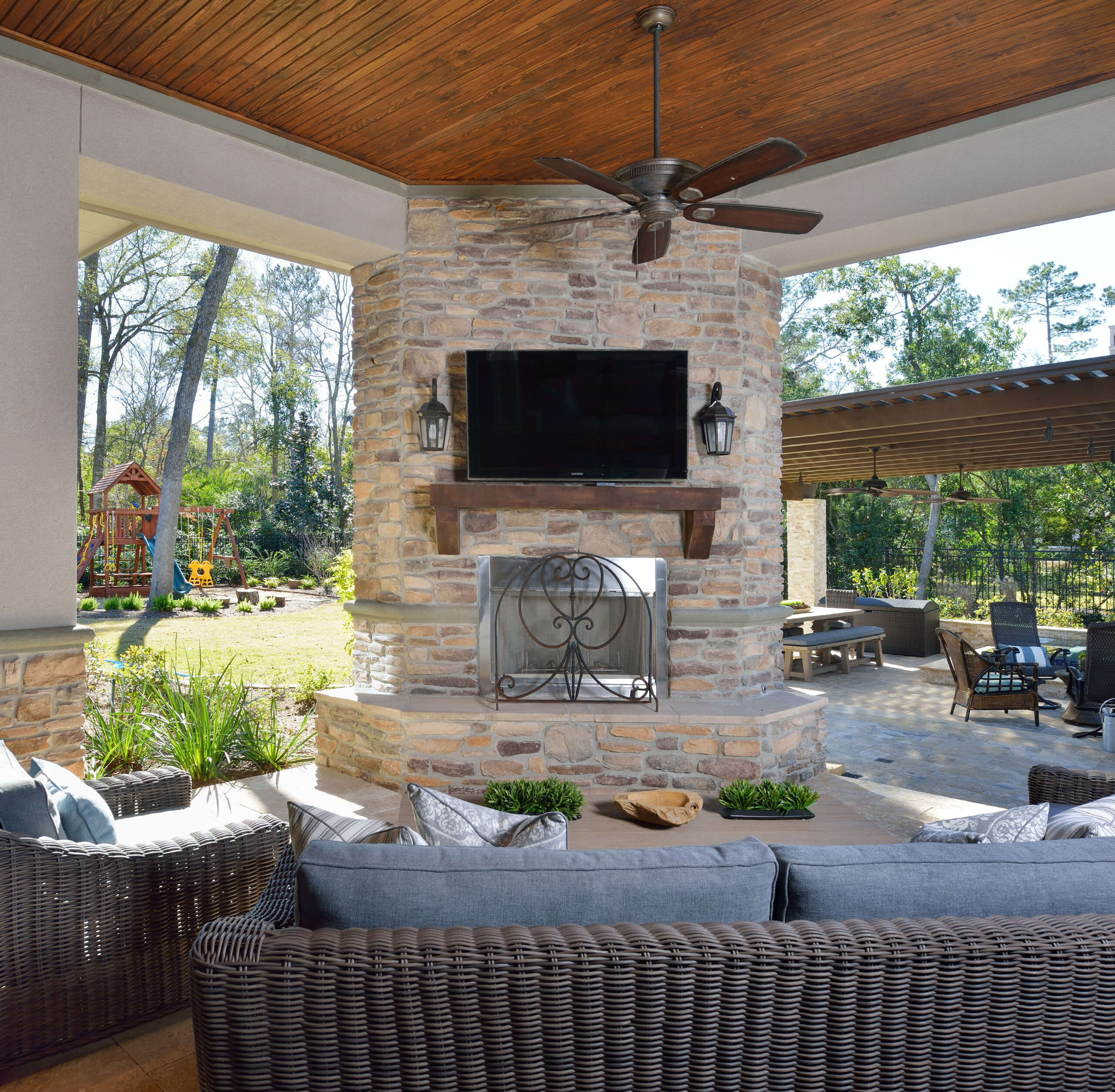
The Benefits of an Indoor-Outdoor Design Plan
Creating a functional indoor-outdoor design plan has many benefits, including an enhanced living experience, expanded living space, and a deeper connection with nature.
Enhanced Living Experience
It’s so easy for us to get caught up in the digital world. But, as humans, we’re meant to experience nature! Creating a connection to the outdoors immediately enriches the quality of life. By promoting a closer connection to nature and creating dynamic living environments, we can enjoy the benefits of natural light, fresh air, and outdoor views throughout the day. Think about all of the ways this can benefit your mental health and attitude!
Expanded Living Spaces
Designing for indoor-outdoor flow extends the usable living space by blurring the lines between interior rooms and outdoor areas. This allows for a more versatile use of the home. With a well-designed indoor-outdoor space, homeowners can accommodate various activities such as dining, entertaining, and relaxation in both settings.
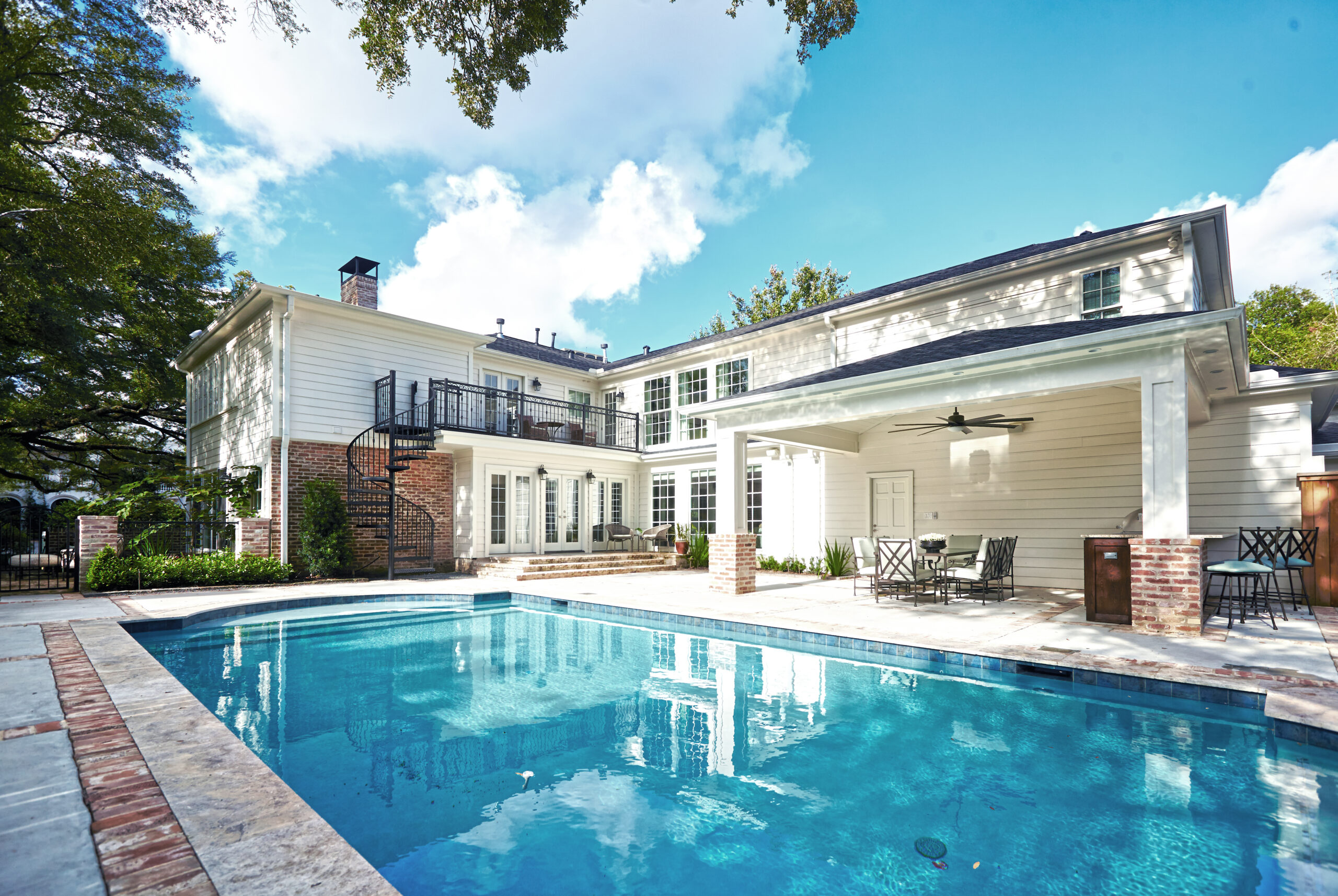
Energy Efficiency
In some climates, indoor-outdoor spaces can help reduce energy costs. Our Houston interior designers are jealous of our friends in California who can leave their sliding doors open to capture the fresh ocean breeze (and leave their thermostats off). Our climate is much more humid and hot – emphasis on humid! But, we can help improve the home’s efficiency through large covered porches that limit sun exposure in the interior and help cut cooling costs during the summer.
Connection to Surroundings
It goes without saying that a home design open to the outdoors will encourage people to connect with nature. Architectural design can complement the surrounding landscape by seamlessly integrating indoor and outdoor spaces. Whether it’s a sprawling countryside or an urban oasis, indoor-outdoor design embraces the surrounding landscape.
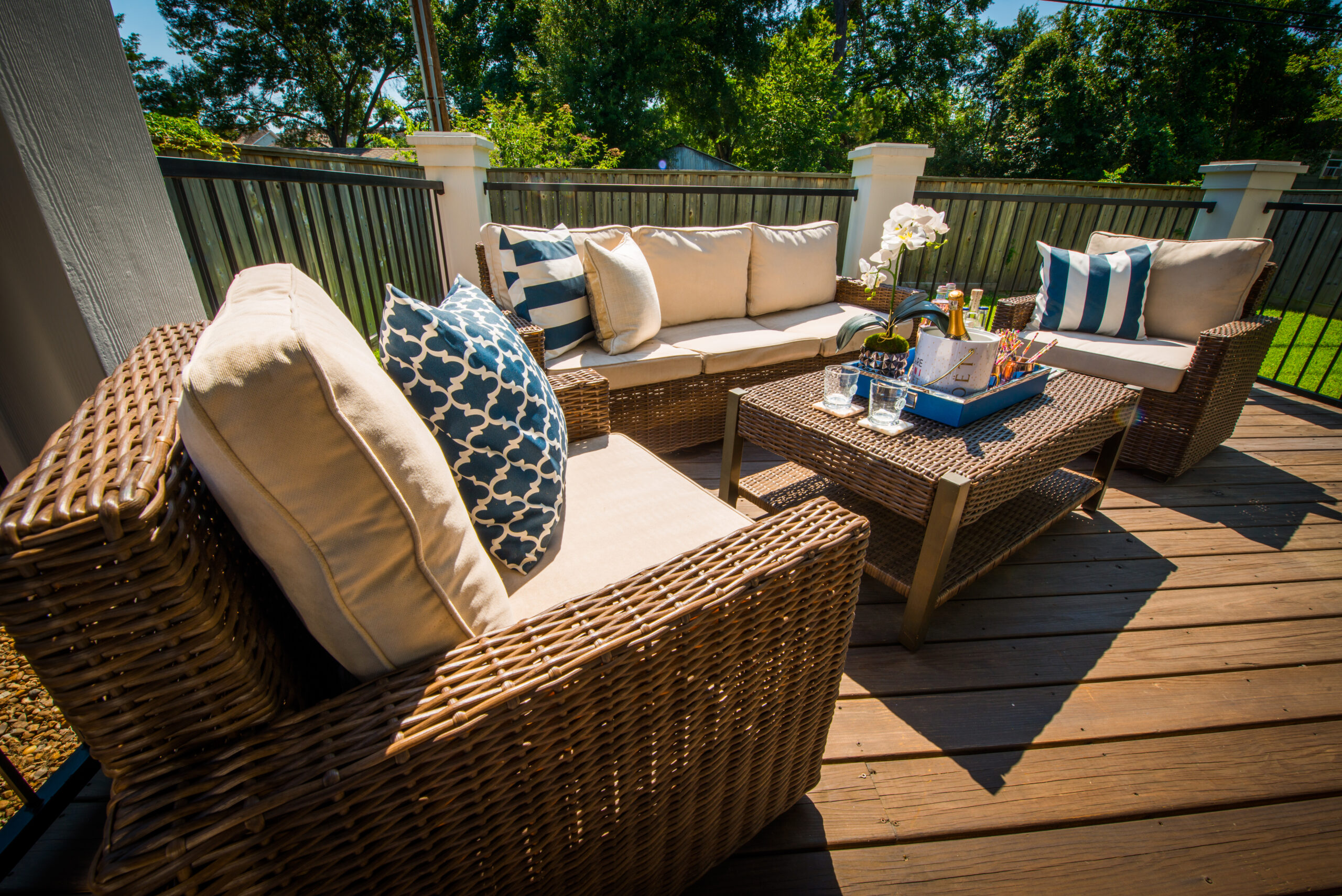
Our founder, Pamela, always finds design inspiration by connecting with nature on her travels. The world we live in poses so many different environments, cultures, and climates that can profoundly impact our design tastes. Pamela has been gracious enough to share many of her design takeaways with us from her trips to Australia and New Zealand, Alaska, Belgium, and more!
Practical Considerations for Indoor-Outdoor Design
Climate and Site Analysis
Understanding the local weather is crucial for designing durable and efficient indoor-outdoor spaces. Designers must consider the climate, topography, and seasonality to create a space that will weather well. Every finish must be considered, from the freeze-thaw ratings of the tile to the wood selected for patio furnishings.
Privacy and Security
Balancing openness with privacy is essential when designing for indoor-outdoor flow, especially in densely populated areas. Privacy concerns keep many homeowners from fully utilizing their outdoor spaces. Strategic landscaping and the integration of privacy elements like screens and fencing can create the feel of a private retreat.
Maintenance and Durability
Selecting durable materials and finishes that can withstand exposure to the elements is essential for the long-term performance of indoor-outdoor spaces. Proper maintenance practices, such as regular cleaning and sealing, help preserve the design’s aesthetic and functional integrity over time. After all, maintenance and durability are a crucial part of the design process! We always want to ensure that our designs can maintain their beauty and feel for years to come.
Need Inspiration? Look to Fallingwater by Frank Lloyd Wright
Fallingwater is a masterpiece of what many call “organic architecture.” It’s a stunning example of how to truly connect a home to the outdoors. Designed by Frank Lloyd Wright in 1935, this iconic residence in rural Pennsylvania features terraces that extend over a cascading waterfall, blurring the boundaries between the building and the natural landscape.
This structure is nothing short of awe-inspiring and is one of Frank Lloyd Wright’s most renowned works. This property has even been named a UNESCO World Heritage site! Don’t miss it if you’re in the area. In fact, this may just be our next travel destination!
Find Your Flow
Are you ready to find your flow? A truly connected indoor-outdoor design plan requires careful consideration of spatial relationships, durable materials, functionality, and environmental surroundings. By prioritizing a functional connection with nature, you can create a space that enhances your living experience and reconnects you with the grounding force of nature. Are you ready to get started? Contact us today, and we’ll be more than happy to help.
Meet Pamela, A Luxury Interior Designer in Houston
Pamela O’Brien is the founder of Pamela Hope Designs in Houston, Texas. Pamela is an award-winning luxury interior designer, writer, and speaker. Prior to founding Pamela Hope Designs, Pamela served as a spokesperson in media and public affairs, working with media outlets like Dateline NBC and 48 Hours. This experience allowed her to travel the world and furthered her love for travel, culture, and interior design. After attending an executive course at the Harvard Graduate School of Design, Pamela launched her own interior design firm full-time. Pamela is known for building strong relationships with her clients, who later become friends and collaborators. She is highly influential in the Houston interior design space and shows no signs of slowing down.


